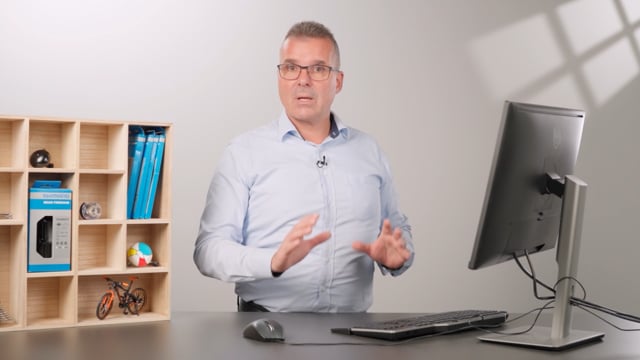
One of the very good things about reverse planning is that it’s so easy to get started with.
You don’t need to set up safety stock, reorder point, planning parameters, anything.
You can just download it from AppSource and get up and running.
So if you go to AppSource or download from extension management directly in Business Central, you download the reverse planning app.
There will be a small notification bar in the header where you can activate it.
It’s not here on my screen right now because I already activated once and then deactivated again.
But it looks like this.
You can go into the assisting setup and you can activate reverse planning manually here and this will be the same as clicking on the notification bar that shows up.
When you activate it, you need to enter your email address and then you can go to some videos and teaching material and it will open a page with a video that you can see on reverse planning that takes a little half an hour and this will be an introduction to reverse planning, a large introduction, a full introduction to reverse planning.
When you’re done you can say don’t share again if you don’t want to share the video again, otherwise it will keep popping up in your face.
Now you’re ready to plan and basically we can do simple MRP planning, move demand dates, identify overstock inventory or direct replenishment.
I will only show the one simple one because we want to get started simple, but basically the simple MRP is of course MRP planning and the move demand dates is to move demand dates when it doesn’t get better on the supply side.
If we try to run the simple MRP, so now we installed the app and we want to run simple MRP.
So we want to see which item do we need to replenish.
You can run the simple MRP directly from here, or you could open that cockpit again.
And until you postpone the video, it will show up like you.
Calculate simple MRP and then out of the box, it has downloaded a lot of template to you, activated a lot of templates.
On each template here, you have a template card and that’s defining the specific template.
So the first one I will suggest you to try is the template Find Critical Items.
When you show the template card on this one, there’s a lot of setup in here on what to include and not to include.
But the important thing is to see that we trigger on inventory level.
And this means we are looking at the items that go below zero in this case.
And the idea is if we have all this item on inventory here, maybe we have a bill and maybe it have a safety stock because somebody entered it or copied the item from another item, maybe from the chain over here.
So there’s a safety stock of 20, which is not correct.
So either we have incorrect data or we have data that are too old.
So therefore, we cannot use the safety stock.
Right now, I just want to see if it goes below zero, because that’s the most critical stuff.
And I want to trigger on end inventory, meaning I’m not interested to show this item if it goes below zero in the period, only if the end inventory is negative.
Because if I have a demand over here and it goes below zero in a period, in a short period maybe, and then there’s a supply coming in a purchase order or production order, and it’s actually going to get unstuck.
I don’t want to see it in the beginning with this template, the critical item template.
So if I run this one here on my primary location in here, it will only show the items, as I said, that goes below zero at the end period.
And this scenario will only have two lines.
So it’s only two different bikes that goes below zero.
And if I scroll a little right, I can see it’s quantity 10 and quantity 18.
If I install the graphical inventory profile app in here, which is free on AppSource, I could also get a graphical view on either of them to see the demands that we have in here and why they get below zero.
And I can suggest very simple quantity to order in the column quantity to order.
There’s a suggest action in here and calculating to zero, I probably also want to fill up to zero from end inventory and up to zero.
And now I want to round up maybe, and maybe using all the modifiers because they come in boxes or whatever.
This is my quantity.
I will check mark the accept action message column for both of them.
And now when I carry out, what will happen is that those lines are moved into a journal we call Reverse Planning Worksheet that it suggests to open.
The Reverse Planning Worksheet is the same or looks the same as the normal planning worksheet.
So here it suggests a production order and a purchase order, two different items.
And that’s actually the only two items in this database that goes below zero on end inventory in the period I’m looking at.
So from here, when I carry out, you might know the requisition worksheet or planning worksheet already.
This will use the standard functionality to carry out in here.
So I will just create two orders, a purchase order and a production order like this.
So it’s that easy to get started with.
You can use all the different templates, try out.
Maybe you want to calculate according to safety stock on end inventory, or let’s do that, or safety stock, not with end inventory, meaning show me if it goes below safety stock in the period or below zero in the period, etc.
So here we could suggest quantity to order from our end inventory up to safety stock.
As an example, like this, we could modify the quantity manually here.
Very simple.
Changing to other quantities.
We can even change the replenishment system.
So if we don’t want to produce it ourselves, but buy it instead or transfer it from one of our locations, we could do it directly here.
And when we accept action measures, let’s say we want to accept only for purchase.
Of course, we could do that.
Set action measures.
And then carry out and open the planning worksheet.
And again, this is all purchase orders that are ready to be carried out.
So without doing any setup on item card or stock keeping unit cards at all, I can just look at my item that go below zero according to the demands and supply we already have and then start planning.

